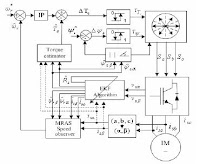To paraphrase an adage, there are two types of motion
control engineers, those that are comfortable tuning a
servo loop, and those that aren’t. And if you are one of
those engineers that aren’t comfortable, you in turn, have two
options. The first is to use a non-servo device such as a step motor,
and the second is to get comfortable!
Whether you are a relative novice, or an experienced hand with
servo tuning, this article will help. It provides an overview of
PID (proportional, integral, derivative) based servo loops, and
introduces two standard manual tuning methods that work well
for a large variety of systems. It will also provide an introduction
to the increasingly popular technique of auto-tuning, which, despite
the name, isn’t necessarily as automatic is it may seem. Finally,
we will look at advanced servo techniques such as feedforward
and frequency domain bi-quad filtering.
Using your in-tune-ition
One of the reasons PID compensators are so popular is that it
is easy to conceive of how each term contributes to the overall
output. The D (derivative) term introduces resistance or drag,
the P (proportional) term introduces a linear restoring force,
and the I (integral) introduces a time-dependent windup term.

Tuning a Servo System
Any closed-loop servo system, whether analog or
digital, will require some tuning. This is the process
of adjusting the characteristics of the servo so that
it follows the input signal as closely as possible.
Why is tuning necessary?
A servo system is error-driven, in other words, there
must be a difference between the input and the
output before the servo will begin moving to reduce
the error. The “gain” of the system determines how
hard the servo tries to reduce the error. A high-gain
system can produce large correcting torques when
the error is very small. A high gain is required if the
output is to follow the input faithfully with minimal
error.
Now a servo motor and its load both have inertia,
which the servo amplifier must accelerate and
decelerate while attempting to follow a change at
the input. The presence of the inertia will tend to
result in over-correction, with the system oscillating
or “ringing” beyond either side of its target (Fig. 3.1).
This ringing must be damped, but too much
damping will cause the response to be sluggish.
When we tune a servo, we are trying to achieve the
fastest response with little or no overshoot.

Tuning the P.I.D. Loop
There are two primary ways to go about selecting the P.I.D. gains. Either the operator uses a trial and error or an analytical approach. Using a trial and error approach relies significantly on the operator's own prior experience with other servo systems. The one significant downside to this is that there is no physical insight into what the gains mean and there is no way to know if the gains are optimum by any definition. However, for decades this was the approach most commonly used. In fact, it is still used today for low performance systems usually found in process control.
To address the need for an analytical approach, Ziegler and Nichols [1] proposed a method based on their many years of industrial control experience. Although they originally intended their tuning method for use in process control, their technique can be applied to servo control. Their procedure basically boils down to these two steps.
more








































